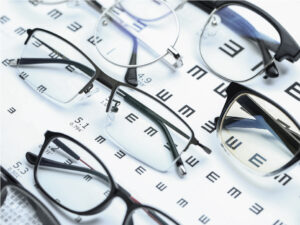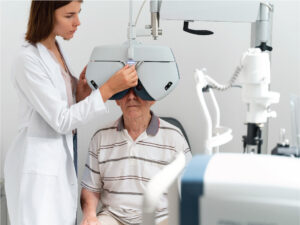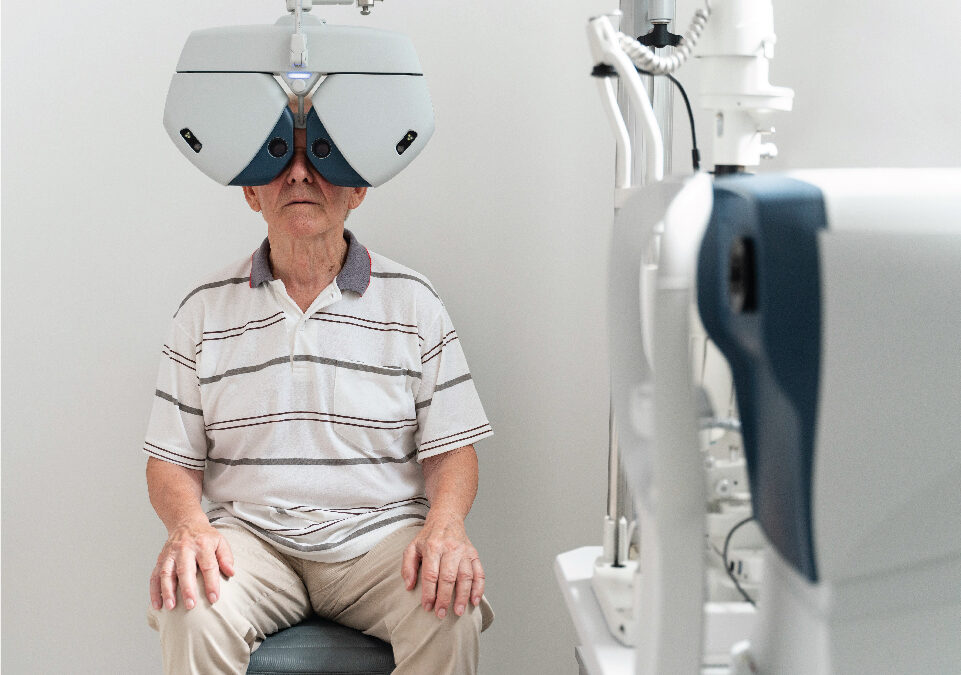
Diabetic Dermopathy: Common Diabetic Skin Conditions
August 11, 2022
Why Delayed Wound Healing Is A Serious Threat For Those With Diabetes
August 11, 2022Vision blur is brought on by cataracts, which are the cloudiness of the eye lens. Having cataracts, according to some people, is like looking through a fogged-up window. The connection between cataracts and diabetes is blood sugar.
Uncontrolled high blood sugar gradually ruins the blood vessels all over the body. The minuscule blood vessels in the eyes are a part of this. Additionally, there is a chance of cataracts and other eye conditions when diabetes affects these blood vessels.
Causes Of Cataract
Amongst the major cataract that causes ageing or injury is primary which causes the tissue that makes up the eye’s lens to change. Vision becomes foggy or cloudy as proteins and fibres in the lens start to degrade. High sugar levels in the aqueous humour are another cause of cataracts. The area between the eyeballs and the cornea’s lens is known as the aqueous humour. It gives the lens oxygen and nutrients. The lens swells as blood sugar levels rise, impairing vision.
Your risk of cataracts may be increased by certain inherited genetic conditions that also result in other health issues. Other eye conditions, previous eye surgery, or medical conditions like diabetes can also lead to cataracts. The long-term use of steroid medications can also result in cataract development.
What Are The Symptoms Of Cataract?

The cloudiness gets denser as the cataract progresses. A cataract prevents your retina from receiving a clearly defined image by scattering and blocking light as it travels through the lens. Your eyesight becomes hazy as a result. Although cataracts frequently arise as cloudy or blurry vision, you may also experience other cataract symptoms like:
- Sensitivity to light
- Variations in how you perceive colour
- Decrease in night vision
- Seeing lights with a halo around them
- Being unable to read in poorly lit spaces
- Prescriptions for eyeglasses frequently changing
If you notice any of these variations in your eyes, particularly if you have diabetes, it’s important to visit your doctor. The presence of cataracts or other eye conditions like glaucoma or diabetic retinopathy could be indicated by these symptoms.
Cataract Prevention If You Have Diabetes

A cataract can be avoided if you have diabetes by keeping your blood sugar levels in check. This entails regularly checking your blood sugar levels and taking your diabetes medications as prescribed.
Regular exercise also aids in blood sugar management. Your muscles can use glucose properly when you exercise. Additionally, it can stop type 2 diabetes from getting worse.
Exercises to support blood sugar stabilization include fast-paced activities like biking, dancing, and competitive sports. The risk of cataracts can rise with excessive alcohol consumption. Cataract development may also be influenced by the sun’s ultraviolet rays. When you’re outside, put on sunglasses that restrict ultraviolet B (UVB) rays.
Additionally, you should give yourself a thorough eye exam at least once a year, keep your blood pressure and cholesterol levels in check, and give your eyes the protection they need.
Sources:
https://www.healthline.com/health/diabetes/diabetes-cataract#takeaway




